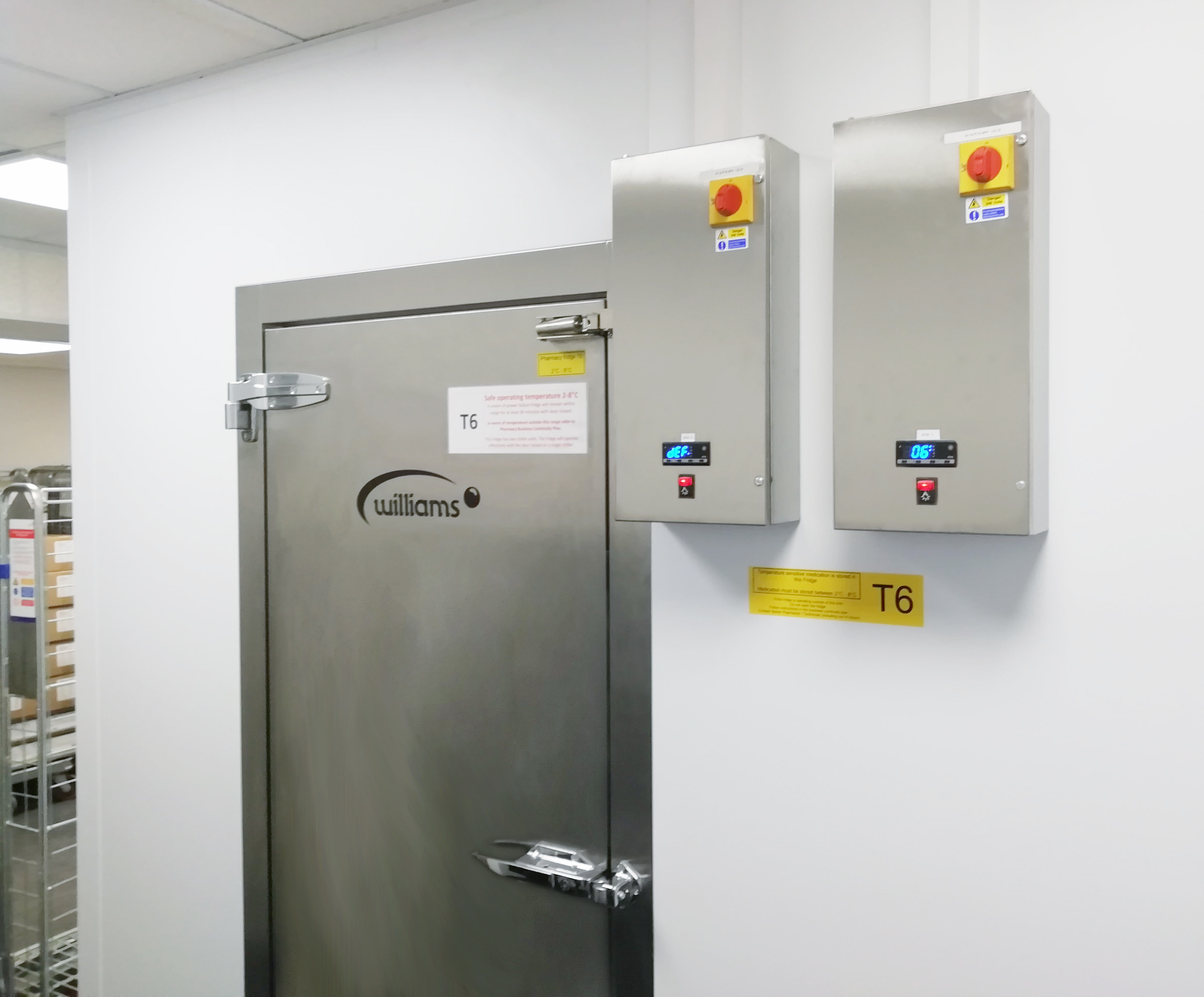Williams specialist coldrooms ensure temperature control of critical supplies
The latest pharmaceutical coldrooms from Williams are constructed of modular panels, making them hugely flexible in terms of their design. This means that they not only precisely match the application’s requirements but also make maximum use of the space available. For added protection they can also be connected to remote monitoring systems.
Williams has seen increased demand from hospitals for its specialist range of pharmaceutical coldrooms in recent months. “We’ve installed units all over the country – from Fife to Weston Super Mare,” says Garry Allitt, national sales manager for Williams.
Pharmaceutical coldrooms require a variety of specialist features, with temperature control being absolutely critical. Typically the range will be 2°C to 8°C, but it may be outside this range, depending on the requirements of the contents. “We can accommodate different temperatures to suit the application, and we can adjust the temperature if the requirements change at any time,” says Allitt.
The value of pharmaceuticals can be incredibly high. “We recently installed a pharmacy coldroom that was just 2.5m by 2.5m, and the value of the contents, when it was only half full, was £300,000!” It’s not surprising than that a key difference between pharmaceutical coldrooms and other types is that they are installed with a backup system – so if one goes down, the other kicks in to ensure a safe temperature is maintained.
Most pharmaceutical coldrooms will have a 100% backup system – in other words, two identical refrigeration systems, one working and one on standby. “There will always be a ‘belt and braces’ backup system, but sometimes the specification will be different. For example, at Darlington Memorial Hospital we installed two independent systems, each designed for a minimum 60% refrigeration duty. Either individual system would be able to maintain product temperature for long enough to ensure the both systems were up and running again.”
Because Williams coldrooms are completely modular, they can be customised to fit almost any requirement. Constructed using foam insulation with zero ODP (Ozone Depletion Potential), the coldroom’s panels are fully camlocked. wall to wall, wall to ceiling and wall to floor. They are securely foamed into tongue and groove joints for a tight-locking, stable structure, eliminating the risk of ice build-up in joints and ensuring the integrity of the thermal envelope.
The Williams coldroom control panel features visual and audible high and low temperature alarms. In addition, it can be connected to BMS or other remote monitoring packages that can send alerts to managers and engineers, both on-and off-site, to ensure any issue is quickly dealt with.

